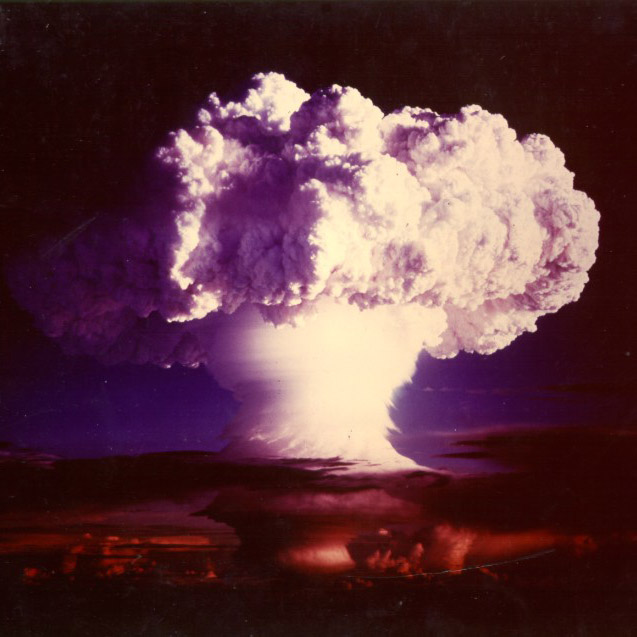Einsteinium
99
Es
Gruppe
i/t
Periode
7
Blokk
f
Proton
Elektron
Nøytron
99
99
153
Generelle eigenskapar
Atomnummer
99
Atommasse
[252]
Massetal
252
Kategori
Aktinid
Farge
i/t
Radioaktiv
Ja
Named after Albert Einstein
Krystallstruktur
i/t
Historie
Einsteinium was discovered as a component of the debris of the first hydrogen bomb explosion in 1952.
It was identified by Albert Ghiorso and co-workers at the University of California, Berkeley in collaboration with the Argonne and Los Alamos National Laboratories, in the fallout from the Ivy Mike nuclear test.
The new element was produced by the nuclear explosion in miniscule amounts by the addition of 15 neutrons to uranium-238.
It was identified by Albert Ghiorso and co-workers at the University of California, Berkeley in collaboration with the Argonne and Los Alamos National Laboratories, in the fallout from the Ivy Mike nuclear test.
The new element was produced by the nuclear explosion in miniscule amounts by the addition of 15 neutrons to uranium-238.
Elektron per energinivå
2, 8, 18, 32, 29, 8, 2
Elektronkonfigurasjon
[Rn] 5f11 7s2
Einsteinium is the first divalent metal in the actinide series
Fysiske eigenskapar
Tilstandsform
Fast stoff
Tettleik
8,84 g/cm3
Smeltepunkt
1133,15 K | 860 °C | 1580 °F
Kokepunkt
-
Smeltevarme
i/t kJ/mol
Fordampingsvarme
i/t kJ/mol
Spesifikk varmekapasitet
- J/g·K
Førekomst i jordskorpa
i/t
Førekomst i universet
i/t

Biletkreditering: Wikimedia Commons (National Nuclear Security Administration)
Einsteinium was first observed in the fallout from the Ivy Mike nuclear test
CAS-nummer
7429-92-7
PubChem CID-nummer
i/t
Atom eigenskapar
Atomradius
-
Kovalent radius
-
Elektronegativitet
1,3 (Paulings skala)
Ioniseringspotensial
6,42 eV
Molart volum
28,5 cm3/mol
Termisk konduktivitet
0,1 W/cm·K
Oksidasjonstrinn
2, 3
Bruksområde
Einsteinium is mainly used for scientific research purposes.
The rare isotope einsteinium-254 is favored for production of ultraheavy elements.
Einsteinium-254 was used as the calibration marker in the chemical analysis spectrometer of the Surveyor 5 lunar probe.
The rare isotope einsteinium-254 is favored for production of ultraheavy elements.
Einsteinium-254 was used as the calibration marker in the chemical analysis spectrometer of the Surveyor 5 lunar probe.
Einsteinium is harmful due to its radioactivity
Isotopar
Stabile isotopar
-Ustabile isotopar
240Es, 241Es, 242Es, 243Es, 244Es, 245Es, 246Es, 247Es, 248Es, 249Es, 250Es, 251Es, 252Es, 253Es, 254Es, 255Es, 256Es, 257Es, 258Es